Peter Yantzer from AGSL gave permission to publish his answer:
"
From: "XXXXXX>
Subject: GIGO
Date: 29 May 2012 03:27:00 GMT+03:00
To: Sergey Sivovolenko , Garry Holloway
Hi Sergey:
I respectfully submit that you are missing the point:
In a short period of time the manufacturers will have to provide accurate scans. If they don't, either wholesalers, retailers or consumers will reject GI (garbage in) scans. This is irrespective of whether or not the stone has a tipped table causing the VPA image to look worse than the stone really is. They won't buy it or will reject it out of hand. Do you think they will want to learn that X stone is not that bad because the table is slightly tilted? I don't think so.
So, to answer question 1: Consumers won't have to know if a scan is GI (garbage in). The scan will have been checked or approved by the distribution chain.
To answer statement 2: You use a tilted table as the cause of increasing garbage out. A tilted table is a major symmetry fault. So if a tilted table causes garbage out and the stone is rejected then so be it! We are still going to do that study I promised Garry about tilted tables and I will report the information to him. Nevertheless, a major symmetry fault is a major symmetry fault. You can do the math. The repair can cost a lot of weight or to minimize weight loss the light performance may be severely lessened because the crown angles have to be reduced, unless you are willing to bring in the diameter at significant loss.
Have you criticized BrillianceScope and other pixel counting devices for the same tilted table problem? Or, are you saying that the light performance is not that adversely affected but the facet angles and facet directions are more adversely affected?
Garry, you tried top make the argument that a piece of dust can get into the press pot before the stone is pressed into it. That argument doesn't fly with me. "xxxxxxxxxxxxxxx"
And, I told you in a previous email that we can adjust a scan to remove the tilted table bias. We just aren't going to do that yet and until the VPA is firmly established in the world.
Feel free to post the above if you like.
Heartily,
Peter
re:Keep in mind that GIGO ( garbage in = garbage out ) definitely applies here.
1)How can consumer define that scan GI is?
2)some software increase garbage other reduce garbage.
for example software that use light performance metrics reduce garbage in ( for example table tilt)
in same any software ,that use directly facet angles with reference to 3D model table , increase garbage out "
P.S
I changed one Peter statement to ""xxxxxxxxxxxxxxx""
"
From: "XXXXXX>
Subject: GIGO
Date: 29 May 2012 03:27:00 GMT+03:00
To: Sergey Sivovolenko , Garry Holloway
Hi Sergey:
I respectfully submit that you are missing the point:
In a short period of time the manufacturers will have to provide accurate scans. If they don't, either wholesalers, retailers or consumers will reject GI (garbage in) scans. This is irrespective of whether or not the stone has a tipped table causing the VPA image to look worse than the stone really is. They won't buy it or will reject it out of hand. Do you think they will want to learn that X stone is not that bad because the table is slightly tilted? I don't think so.
So, to answer question 1: Consumers won't have to know if a scan is GI (garbage in). The scan will have been checked or approved by the distribution chain.
To answer statement 2: You use a tilted table as the cause of increasing garbage out. A tilted table is a major symmetry fault. So if a tilted table causes garbage out and the stone is rejected then so be it! We are still going to do that study I promised Garry about tilted tables and I will report the information to him. Nevertheless, a major symmetry fault is a major symmetry fault. You can do the math. The repair can cost a lot of weight or to minimize weight loss the light performance may be severely lessened because the crown angles have to be reduced, unless you are willing to bring in the diameter at significant loss.
Have you criticized BrillianceScope and other pixel counting devices for the same tilted table problem? Or, are you saying that the light performance is not that adversely affected but the facet angles and facet directions are more adversely affected?
Garry, you tried top make the argument that a piece of dust can get into the press pot before the stone is pressed into it. That argument doesn't fly with me. "xxxxxxxxxxxxxxx"
And, I told you in a previous email that we can adjust a scan to remove the tilted table bias. We just aren't going to do that yet and until the VPA is firmly established in the world.
Feel free to post the above if you like.
Heartily,
Peter
re:Keep in mind that GIGO ( garbage in = garbage out ) definitely applies here.
1)How can consumer define that scan GI is?
2)some software increase garbage other reduce garbage.
for example software that use light performance metrics reduce garbage in ( for example table tilt)
in same any software ,that use directly facet angles with reference to 3D model table , increase garbage out "
P.S
I changed one Peter statement to ""xxxxxxxxxxxxxxx""

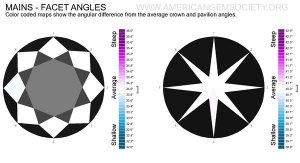
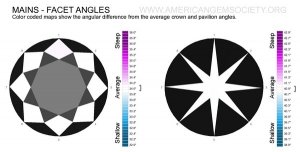

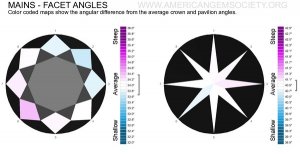
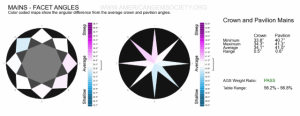

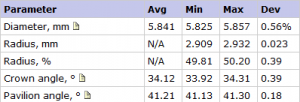
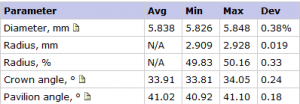
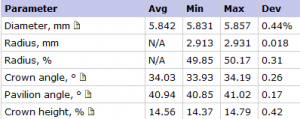
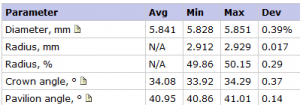
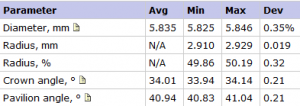
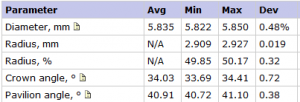
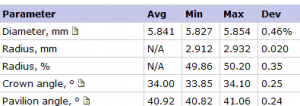
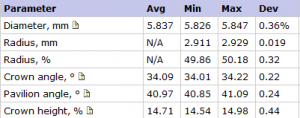
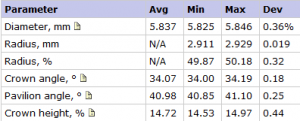
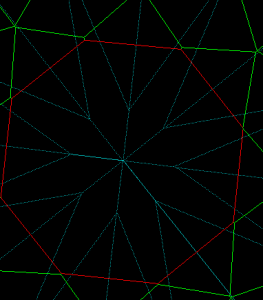

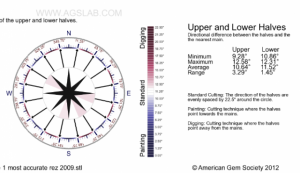


300x240.png)